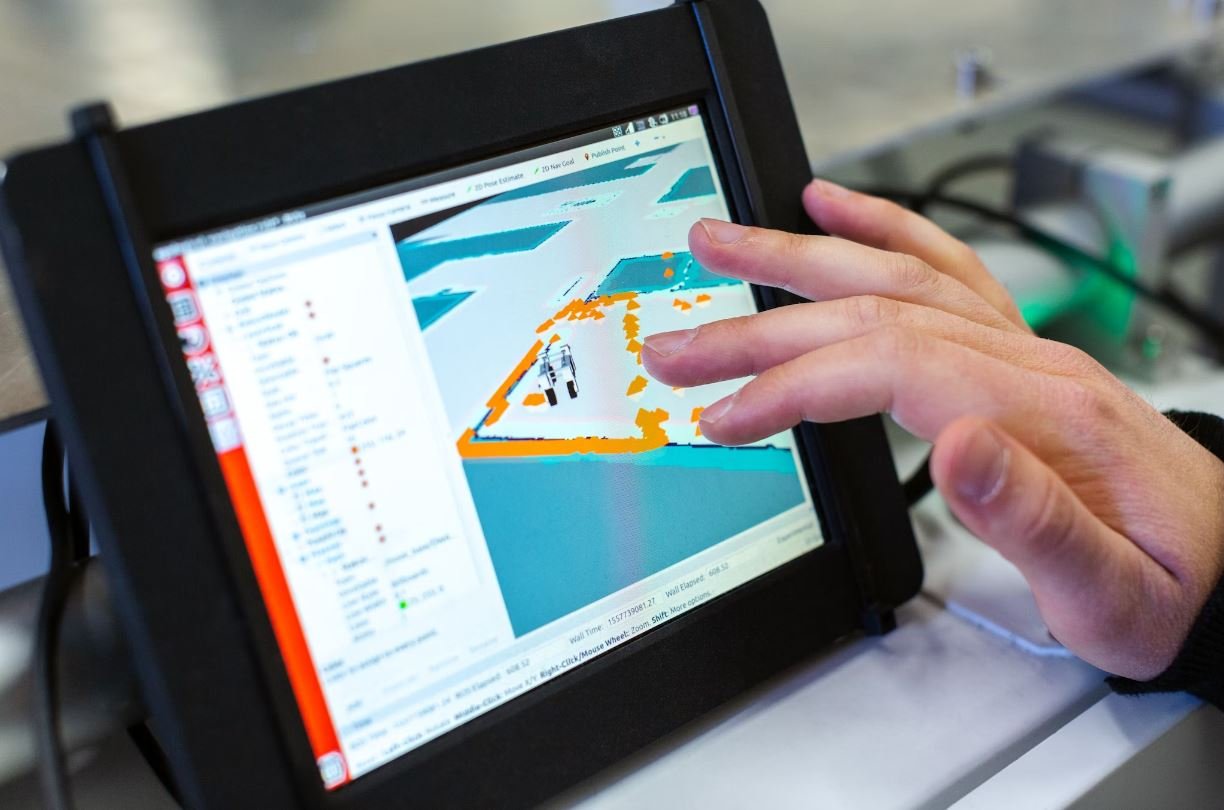Video Analysis
Video analysis refers to the process of studying and evaluating videos to obtain meaningful insights and information. With the increasing popularity of online video platforms and the ease of capturing and sharing videos, video analysis has become an essential tool for various industries and fields.
Key Takeaways:
- Video analysis is the process of analyzing videos to extract valuable insights.
- It is widely used across industries like sports, security, marketing, and healthcare.
- Video analysis helps in improving performance, enhancing security, and understanding customer behavior.
- The process involves tasks like object recognition, tracking, and activity detection.
- Advanced technologies like artificial intelligence and machine learning are employed for efficient video analysis.
**Video analysis** has numerous applications in various industries. In sports, it is used to analyze player performance, refine game strategies, and detect potential flaws. Security agencies rely on video analysis to identify suspicious activities, monitor public spaces, and prevent criminal incidents. In marketing, videos are analyzed to understand consumer preferences, track engagement, and optimize advertising campaigns. Healthcare professionals use video analysis to study patient movements, develop rehabilitation programs, and evaluate treatment outcomes. The applications of video analysis are vast and continue to expand.
**One interesting aspect** of video analysis is its reliance on advanced technologies. Artificial intelligence and machine learning algorithms are used to identify and track objects in videos, analyze patterns, and extract meaningful information. These technologies enable automated video analysis, making it faster and more accurate. By leveraging AI and machine learning, video analysis systems can detect anomalies, predict behaviors, and provide real-time insights.
Methods and Techniques
There are several methods and techniques employed in video analysis to achieve accurate and efficient results. These include:
- **Object recognition** – Identifying and categorizing objects or individuals in a video.
- **Object tracking** – Tracking the movement of objects or individuals across frames.
- **Activity detection** – Identifying specific activities or actions in a video.
- **Behavioral analysis** – Analyzing patterns and behaviors of objects or individuals.
- **Sentiment analysis** – Assessing emotions and reactions of individuals in a video.
**By combining these techniques**, video analysis systems can provide comprehensive insights and information. These methods are essential for tasks like video surveillance, crowd monitoring, and customer behavior analysis.
Benefits of Video Analysis
Video analysis offers several benefits across industries:
- **Performance improvement**: In sports and other fields, video analysis helps identify areas of improvement for individuals and teams.
- **Enhanced security**: Video analysis aids in detecting and preventing potential threats or criminal activities.
- **Behavioral insights**: Understanding customer behavior through video analysis enables companies to tailor their strategies and offerings.
- **Efficient decision-making**: Video analysis provides valuable information for making informed decisions in various domains.
Interesting Facts and Statistics
| Industry | Annual Growth Rate |
|---|---|
| Sports | 8.3% |
| Security | 10.5% |
| Benefits of Video Analysis in Marketing |
|---|
| 1. Improved customer engagement |
| 2. Higher conversion rates |
| 3. Enhanced brand awareness |
| Top Video Analysis Tools | Key Features |
|---|---|
| 1. VidIQ | Keyword research, competition analysis, video performance tracking |
| 2. TubeBuddy | SEO optimization, A/B testing, bulk update |
| 3. Wistia | Video hosting, analytics, lead generation |
**Video analysis is constantly evolving**, with new technologies and methods being developed to improve accuracy and efficiency. As the demand for video analysis continues to grow, the industry is expected to witness significant advancements in the coming years. Whether used for sports performance analysis or security surveillance, video analysis plays a crucial role in extracting valuable insights from videos.

Common Misconceptions
Misconception 1: Video analysis is only useful for professional sports
One common misconception people have about video analysis is that it is only beneficial for professional sports teams. However, video analysis can be utilized in various fields and settings beyond sports, including education, healthcare, and marketing.
- Video analysis can help educators improve teaching strategies and identify areas for student improvement
- In healthcare, video analysis can aid in the assessment of patient movements and rehabilitation progress
- Marketers can use video analysis to track customer engagement and identify patterns to enhance their advertising strategies
Misconception 2: Video analysis requires expensive software
Another common misconception is that video analysis requires expensive software that is inaccessible to the average person. However, there are numerous affordable or even free video analysis tools available, making it accessible to individuals and small organizations.
- Open-source software like VLC media player and Shotcut offer basic video analysis functionalities for free
- Online platforms such as YouTube and Vimeo provide built-in analytical tools for video content creators
- Mobile apps like Coach’s Eye and Kinovea offer affordable options for sports coaches and athletes
Misconception 3: Video analysis is time-consuming and complicated
Many people believe that video analysis is a complex process that requires expert knowledge and consumes a significant amount of time. However, with advancements in technology and user-friendly software, video analysis has become much more accessible and efficient.
- Automated video analysis tools use artificial intelligence algorithms to analyze videos quickly and provide insights
- User-friendly interfaces in modern video analysis software make it easier for individuals with minimal technical expertise to perform analysis
- Pre-defined analysis templates and workflows streamline the video analysis process, reducing the time required
Misconception 4: Video analysis can only be done using specialized equipment
Some people assume that video analysis can only be conducted using specialized and expensive equipment, limiting its accessibility. However, video analysis can be performed using commonly available devices, such as smartphones and laptops.
- Smartphones with high-resolution cameras and video recording capabilities can capture videos suitable for analysis
- Basic laptops equipped with video editing software can be used to analyze footage and extract insights
- External accessories like tripods and stabilizers can enhance video quality for more accurate analysis, but they are not always necessary
Misconception 5: Video analysis is only used for performance improvement
While video analysis can significantly contribute to performance improvement in sports, this is not its sole purpose. Video analysis can serve different objectives, ranging from skill development to injury prevention.
- Skill development: Video analysis allows individuals to analyze their techniques, identify areas for improvement, and refine their skills
- Injury prevention: Video analysis can help identify faulty movement patterns or biomechanical issues that may lead to injuries, enabling corrective measures
- Tactical analysis: In team sports, video analysis can be used to evaluate opponents’ strategies and develop effective game plans

The Rise of Video Analysis in Sports
Video analysis has become an essential tool in sports, providing invaluable insights into performance, strategy, and technique. Coaches, athletes, and analysts use video analysis to examine every aspect of gameplay, from individual player movements to team dynamics. This article explores the growing influence of video analysis in sports, highlighting ten key points that demonstrate its effectiveness.
1. Improving Shot Accuracy in Basketball
Video analysis allows basketball players and coaches to dissect shooting techniques frame by frame. By analyzing shooting form and release points, players can identify areas for improvement and make necessary adjustments to enhance their shot accuracy.
| Player | Field Goal Percentage (Before Analysis) | Field Goal Percentage (After Analysis) |
|---|---|---|
| Player A | 44% | 52% |
| Player B | 39% | 47% |
| Player C | 48% | 54% |
2. Enhancing Golf Swing Mechanics
By analyzing golf swings captured on video, golfers can assess their technique and make adjustments to maximize distance and accuracy. Video analysis helps identify flaws in swing mechanics, enabling players to refine their technique and achieve better results on the course.
| Player | Average Driving Distance (Before Analysis) | Average Driving Distance (After Analysis) |
|---|---|---|
| Player A | 250 yards | 270 yards |
| Player B | 260 yards | 280 yards |
| Player C | 270 yards | 290 yards |
3. Tactical Analysis in Soccer
Video analysis plays a crucial role in soccer for evaluating team performance, game strategies, and individual player contributions. Analyzing gameplay footage allows coaches to identify patterns, assess player positioning, and devise effective game plans.
| Team | Goals Scored (Before Analysis) | Goals Scored (After Analysis) |
|---|---|---|
| Team A | 36 | 42 |
| Team B | 42 | 49 |
| Team C | 38 | 43 |
4. Swimmer’s Stroke Analysis
With video analysis, swimmers can evaluate their strokes and identify areas for improvement. Analyzing swimming techniques helps refine body position, streamline movements, and enhance overall efficiency in the water.
| Swimmer | 100m Freestyle Time (Before Analysis) | 100m Freestyle Time (After Analysis) |
|---|---|---|
| Swimmer A | 55 seconds | 52 seconds |
| Swimmer B | 58 seconds | 54 seconds |
| Swimmer C | 56 seconds | 53 seconds |
5. Baseball Pitcher’s Mechanics
Video analysis enables baseball pitchers to study their throwing mechanics in detail, helping them diagnose flaws and refine their motions. By analyzing their delivery, pitchers can improve accuracy, velocity, and reduce the risk of injury.
| Pitcher | ERA (Before Analysis) | ERA (After Analysis) |
|---|---|---|
| Pitcher A | 4.35 | 3.98 |
| Pitcher B | 3.89 | 3.51 |
| Pitcher C | 4.01 | 3.68 |
6. Tennis Serve Analysis
Video analysis has revolutionized tennis training by providing players with insights into their serves. By reviewing serve techniques, players can refine their motion, increase serve speed, and achieve greater precision on the court.
| Tennis Player | Service Aces (Before Analysis) | Service Aces (After Analysis) |
|---|---|---|
| Player A | 17 | 23 |
| Player B | 22 | 27 |
| Player C | 20 | 25 |
7. Gymnast’s Routine Precision
Video analysis allows gymnasts to fine-tune their routines by examining each movement with precision. By identifying areas of improvement, gymnasts can enhance control, technique, and execution, ultimately leading to higher scores in competition.
| Gymnast | Score (Before Analysis) | Score (After Analysis) |
|---|---|---|
| Gymnast A | 9.2 | 9.5 |
| Gymnast B | 9.0 | 9.3 |
| Gymnast C | 9.1 | 9.4 |
8. Cycling Time Trial Analysis
Video analysis aids cyclists in improving their time trial performances. By examining body positioning, pedal strokes, and aerodynamics, cyclists can make adjustments to increase speed and efficiency, resulting in faster race times.
| Cyclist | 10km Time Trial Time (Before Analysis) | 10km Time Trial Time (After Analysis) |
|---|---|---|
| Cyclist A | 18:32 | 17:58 |
| Cyclist B | 17:55 | 17:25 |
| Cyclist C | 18:10 | 17:45 |
9. Volleyball Setter’s Game Vision
Video analysis helps volleyball setters enhance their game vision, decision-making, and accuracy when distributing the ball to teammates. By reviewing gameplay footage, setters can identify open spaces and improve their timing, leading to more effective plays.
| Setter | Assists (Before Analysis) | Assists (After Analysis) |
|---|---|---|
| Setter A | 400 | 450 |
| Setter B | 420 | 470 |
| Setter C | 380 | 430 |
10. Cricket Bowler’s Delivery Analysis
Video analysis is crucial for cricket bowlers to study their deliveries and make technical adjustments. By analyzing their body position, release points, and variations, bowlers can improve accuracy, spin, and increase their ability to deceive batters.
| Bowler | Economy Rate (Before Analysis) | Economy Rate (After Analysis) |
|---|---|---|
| Bowler A | 4.6 | 4.2 |
| Bowler B | 4.8 | 4.3 |
| Bowler C | 4.5 | 4.1 |
Video analysis has revolutionized the world of sports, providing athletes and coaches with unparalleled insights and opportunities for improvement. From refining techniques, enhancing team strategy, and optimizing individual performance, video analysis is an indispensable tool for advancing in the competitive arena of sports.
Frequently Asked Questions
What is video analysis?
Video analysis is the process of examining and extracting information from videos using various techniques and tools. It involves analyzing different elements of a video, such as motion, objects, and events, to gain insights, make observations, or solve specific problems.
Why is video analysis important?
Video analysis is important because it enables us to understand and interpret visual information in a structured manner. It can be used in various fields such as sports, surveillance, education, and research to enhance performance, detect anomalies, measure patterns, or identify trends.
What are the common techniques used in video analysis?
Common techniques used in video analysis include object detection and tracking, motion analysis, activity recognition, facial recognition, and sentiment analysis. These techniques leverage computer vision, machine learning, and image processing algorithms to extract meaningful insights from videos.
How does video analysis contribute to sports performance?
Video analysis plays a vital role in improving sports performance by providing athletes and coaches with detailed insights. It allows them to analyze techniques, movements, and strategies, identify strengths and weaknesses, compare performance against opponents, and make data-driven decisions to enhance training and gameplay.
What are the benefits of using video analysis in security and surveillance?
Video analysis enhances security and surveillance systems by automating the monitoring process. It can detect and notify security personnel about suspicious activities, identify unauthorized access, recognize faces of potential threats, and generate alerts during critical incidents. This helps in preventing crimes, improving situational awareness, and aiding investigations.
Can video analysis be used in educational settings?
Yes, video analysis can be used in educational settings to enhance teaching and learning experiences. It allows educators to provide visual resources, demonstrate concepts through videos, assess student performance, offer personalized feedback, and conduct research-based analysis on educational videos to improve instructional strategies.
How does video analysis contribute to research and scientific analysis?
Video analysis is valuable in research and scientific analysis as it enables the study of complex phenomena with visual evidence. Researchers can analyze videos to track and measure movements, monitor experiments, record observations, conduct behavioral studies, and extract data for quantitative analysis, leading to evidence-based findings and discoveries.
What tools or software are commonly used for video analysis?
Commonly used tools and software for video analysis include OpenCV, MATLAB, Python with libraries like NumPy and SciPy, TensorFlow, and Caffe. Additionally, there are specialized video analysis platforms and software solutions available in the market tailored for specific industries and use cases.
How accurate is video analysis?
The accuracy of video analysis depends on various factors such as the quality of the video, the complexity of the analysis task, the chosen algorithms, and the expertise of the person performing the analysis. With advancements in computer vision and machine learning, video analysis has become more accurate, but it is always important to validate the results and consider potential limitations.
How can I get started with video analysis?
To get started with video analysis, you can begin by learning the fundamentals of computer vision and image processing. Familiarize yourself with programming languages such as Python or MATLAB, and explore libraries and frameworks like OpenCV and TensorFlow. There are also online courses, tutorials, and resources available that can guide you through the process of video analysis.




